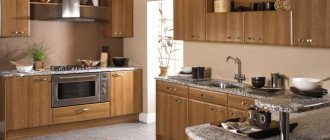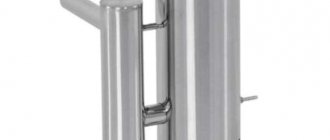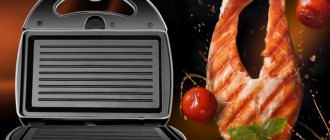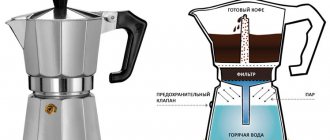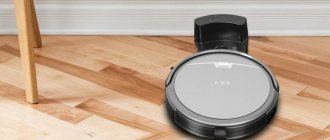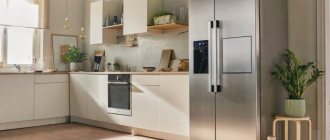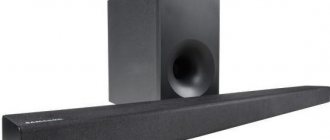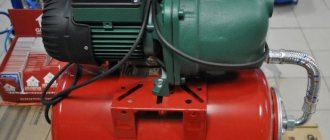Self-installation
In order for the purchased hood to provide high-quality air purification, it is necessary not only to choose the right model, but also to install it taking into account all the requirements. At the very beginning, you should make a calculation and determine the place where the device will be mounted. Only compliance with all rules will ensure the normal functioning of the device and the ventilation system as a whole.
Before installation, mark the height at which the hood will be mounted - it all depends on the type of slab. It is also worth taking into account the height of the housewife herself, so that it is convenient for her to use the device.
Installation work is carried out in the following sequence:
- determine the height of the structure;
- install fasteners in accordance with its type;
- connect the power supply (and the sockets must be installed as close to the device as possible);
- directly connect the equipment to the ventilation system.
When choosing a kitchen hood, you should give preference to products from well-known manufacturers. Leading companies use innovative technologies and high-quality materials in production, and this provides protection against breakdowns and significantly increases the service life of the device.
Self-installation of a kitchen hood
Professional advice will tell you how to properly install an electrical appliance above the hob so that it functions efficiently and for as long as possible.
So, special attention should be paid primarily to the height of the device relative to the stove. When it is fixed high, you should not expect fruitful work, and this means one thing - all the fumes and foreign odors from cooking will remain indoors. Otherwise, the hood will complicate the cooking process.
The ideal solution is to maintain a height above the hob of 75–80 centimeters.
Another important nuance that will affect the productivity of the device is its distance from the air exhaust shaft. The closer it is, the fewer pieces of corrugated pipe and connecting elbows will be required, this will increase the exhaust force and reduce noise.
Having ensured that the hood is securely connected to the shaft inlet, you need to take care of covering it. You will need a valve and a grille for this.
Advice! The diameter of the air duct should be larger than the exhaust hole of the electric hood, which will significantly reduce the load on the electric motor and allow the work to be done more efficiently and with a low noise level.
Strengthening the hood over a kitchen gas stove
The complexity of installation work directly depends on the type and size of the device. Thus, flat-shaped models are attached to the bottom of a hanging cabinet or directly to the wall surface with metal hooks.
Models with a corner strip are placed inside the cabinet; a through hole of the required diameter for a corrugated pipe is made in advance. Dome hoods are mounted on the wall surface.
After the filter device is installed, an air duct is connected to the outlet and secured with special hooks. It can also be a polyvinyl chloride pipe with a smooth wall surface - this is the cheapest option.
After installation, it will require regular cleaning of fat deposits, soot, and dirt. A steel box is more comfortable to use, but its installation will require significant material expenditure. The video will tell you more about how to properly install a hood over a gas stove with your own hands:
Principle of operation
When choosing a hood for the kitchen, pay attention to how it works - in recirculation mode (with a purifier, without an air duct) or with exhaust air exhaust into ventilation. The first option is better to choose for private houses and if you do not want to install the air exhaust yourself, because
Most likely you have no ventilation. The disadvantage of chimneyless models is lower productivity, because they simply purify the air and send it back into the room, creating circulation. For apartments, a model with a ventilation outlet, which is present in most panel houses, even in Khrushchev-era buildings, is more suitable, although here you can choose equipment without ventilation
The first option is better to choose for private houses and if you do not want to install the air exhaust yourself, because Most likely you have no ventilation. The disadvantage of chimneyless models is lower productivity, because they simply purify the air and send it back into the room, creating circulation. For apartments, a model with a ventilation outlet, which is present in most panel houses, even in Khrushchev-era buildings, is more suitable, although here you can choose equipment without ventilation.
By the way, there are universal models that combine recirculation and exhaust air removal modes. If you don’t know which option is better to choose, consider a universal hood so you don’t go wrong!
I should also say a few words about filters. We advise you to choose a cleaning system option that has aluminum mesh installed. They are easier to clean and do a pretty good job of trapping grease in the kitchen. Synthetic and carbon filters provide better cleaning, but at the same time are disposable.
Budget
Low-cost air filtration technology surprisingly harmoniously combines high quality and affordable cost. At the same time, the technical characteristics are at the highest level. But there are both pros and cons that you should be aware of.
Lex Mini 600
Average price: 6790 rub.
LEX is an Italian brand that has been producing equipment for more than 15 years. Over the years, the company has managed to achieve serious successful results and continues to develop today. The budget model Mini 600 is popular among Russians. The device has a size of 600 mm.
The manufacturer offers a large selection of colors; in addition to black, you can buy models in silver, white, black-gray and ivory.
The exhaust unit can operate in air extraction and air recirculation modes, and is equipped with aluminum filter elements. The model can optionally be equipped with a carbon filter.
The assembly and efficiency of the equipment is up to par. But the main thing to understand is that the productivity is 420 m3 in 60 minutes. the work will be good for a room of approximately 11 m2. Other advantages include lower noise levels (up to 48 dB at third speed).
Lex Mini 600
Advantages
- noise is no more than 48 dB;
- two halogen bulbs of 35 W;
- powerful;
- quality assembly;
- five-year warranty service.
Flaws
- not detected.
Kronasteel Olly PB 600
Average price: 5990 rub.
The technique has proven itself well. The German manufacturer issues a 2-year warranty, and for engines it is seven years. Air filtration equipment is considered one of the most sought after and comes in white, ivory and black designs made from high quality materials.
You may be interested in: Choosing the best dryer for vegetables and fruits: TOP 7 rating, characteristics, reviews
Button control. Well suited for kitchen areas up to 10 m2. Operating mode – recirculation. The width of the unit is 600 mm. Noise level – 38-59 dB. Boxes – 2 pcs. Power 65 W. Illumination: 2 LED bulbs, 1 W each.
Kronasteel Olly PB 600
Advantages
- light weight – 7.8 kg;
- productivity – up to 500 m3/h;
- anti-return valve.
Flaws
- there is no automatic turn-on timer, speed indicator and Intellect Start battery mode;
- Carbon filter is not included.
Weissgauff Gamma 60 PB BL
Average price: 5990 rub.
The case is glass and metal, mechanical control with buttons, air recirculation and exhaust modes, one 155 W motor - these are the basic characteristics of the ventilation device. In general, everything is similar to competing companies. The same applies to the use of 2 halogen bulbs of 35 W for illumination and an anti-return valve included in the package.
However, if we add to this the excellent build quality, quiet, comfortable operation of the device at 46 dB and high performance up to 900 m3/h, offered by the manufacturer at a recommended price of 6,000 rubles, then we can talk about the best exhaust equipment in terms of cost and quality among budget models.
Weissgauff Gamma 60 PB BL
Advantages
- perfectly eliminates odors;
- noiselessness;
- ease of installation;
- carbon filtration (optional);
- inexpensive.
Flaws
- halogen bulbs.
Which kitchen hood to choose for an electric stove: dome models
This type of device is not suitable for every consumer. The whole reason is that this type of equipment requires a lot of space and it is not always possible to accommodate it. But if the buyer is ready to sacrifice precious space for the sake of quality and reliability, then it is worth thinking about purchasing this particular unit. And before that, you need to understand all the subtleties and features.
When wondering which dome hood to choose for the kitchen, you should first decide on the potential location of the equipment:
- In cases where installation is planned near walls, the fireplace type is better suited.
- If the space requires that the appliances be built between two walls, then the corner option is also worthy of consideration.
- The wall-mounted type (umbrella hood) is most suitable for an island kitchen.
But this is not the only important thing when choosing which household hood is best for the kitchen. It should be noted that the material for design is also of great importance.
By choosing steel structures coated with protective agents, you can be confident in the durability of your equipment. But if the design requires that the selected technique be in a certain color range, then it is better to give preference to models painted with powder.
The reliability of this type of equipment is the main advantage. But besides this, there is a list of positive aspects that can influence the choice of buyers for the better:
- if most standard options are designed only to purify the air, then this one will also take care of the burning smell;
- size varies from 50 to 90 cm;
- everyone will be able to choose a specific model based on their financial situation;
- variety of designs and colors.
The classic version is made of metal and does not stand out at all from the rest of the fittings
But if you choose which unusual hood to choose for an electric stove and make the main emphasis on it, then you should pay attention to options decorated in copper, bronze or wood, but glass will look especially advantageous. Shapes can also be varied and give a special accent to the interior.
What is an inclined hood?
An inclined hood is also a device designed to clean the air in the kitchen. Its name is explained by the inclined location of the main part, which can be either fixed or have the ability to change the angle. Its main advantages can be called compactness - during the cooking process, at the moment when a person is near the stove, it does not in any way constrain or limit his movement. In this regard, it can be compared with the range of built-in models, which also have a small width.
Inclined hoods appeared on the consumer market relatively recently, so among the assortment it is almost impossible to find uninteresting options. They can be made of either metal or glass or a combination of these two materials. Additional functions in them also greatly simplify the use of the device, since in most cases they are provided in exactly the same form that was so lacking when using outdated models.
Inclined hood
Rating of the best manufacturers
Before purchasing a kitchen air purifier, experts recommend that you familiarize yourself in detail with the rating of the most popular models in the price segment that suits you.
Most of our compatriots prefer brands such as Siemens, Bosch, Kronasteel, Hansa, Gorenje, Elikor, Samsung. They successfully combine high quality, reliability, affordable cost and attractive appearance of their products.
Budget models
| Gorenje DU5345W This model is recognized as one of the best hanging air purifiers that will look great in a small kitchen. Productivity - 300 m3/h. Two-stage filtration system, three axial fan operating modes, bright halogen lighting. Equipped with aluminum grease and carbon filters. Control type: push-button. Advantages:
Flaws: High noise level. |
| Elikor Integra 60 Elikor Integra 60 is considered one of the most inexpensive among built-in models. The device copes well with the tasks in medium-sized kitchens. A special feature of this device is the ability to operate in circulation mode (without connection to ventilation) and flow mode (with outlet to the ventilation system). Productivity - 400 m3/h. Two speeds, grease filter. Illumination by incandescent lamps. Control type: push-button. Advantages:
Flaws: Weak functionality. |
Middle price segment
| Candy CBT 6130 X Despite the relatively low cost, this built-in model is one of the most inexpensive in the middle price segment. Productivity - 200 m3/h allows you to easily cope with air purification in a small kitchen. Features: two engines; the ability to work in two modes, two-stage filtration system, three speeds of rotation of the fan blades. Halogen backlight. Push-button control type. Supplied with a grease and carbon filter. Advantages:
Flaws:
|
| Zigmund Shtain K 003.51 The Zigmund Shtain K 003.51 hood is characterized by a high performance level of 1000 m3/h. The width of 50 cm allows you to easily place the device in small kitchens. Features: ability to operate in two modes (removal/recirculation); 3 speeds, grease filter, incandescent lighting. Push-button control makes this model as simple as possible in everyday use. Advantages:
Flaws: Single stage filtration system. |
Premium models
| Hansa OKC 6726 IH Hansa OKC 6726 IH is a modern dome-type air purifier that will fit into the design of any kitchen thanks to its bright design. Width - 60 cm. Capacity - 62 m3/h. Features and functionality: two operating modes (ventilation/absorbent); 3 speeds, shutdown timer. Illumination by 2 incandescent lamps. Advantages:
Flaws: Only one grease filter is supplied in the kit. |
| Bosch DFS 067K50 The products of this brand have earned a reputation as a reliable manufacturer of high-quality household appliances. According to reviews, the Bosch DFS 067K50 built-in kitchen air purifier has the best price-quality ratio to date. The device is equipped with a steel body 60 cm wide. Capacity is 700 m3/h. Three operating modes (removal/circulation/intensive); 4 speeds; touch control. Cleaning system: grease filter with contamination indicator and the ability to install an active filter element. The device is equipped with a timer and LED backlight. Advantages:
The disadvantage is the high cost. |
The best kitchen hoods
Pay attention to the rating of the most popular and high-quality hoods presented below.
ELIKOR Integra 60
Stylish and modern built-in hood. It is compact in size and saves free space in your kitchen
. Simply mounted inside a hanging cabinet located above the hob or stove.
Operation is possible in one of two modes - removal of air masses and their circulation.
In the first case, the air will be discharged by the device to the street or into the ventilation duct. In the second operating mode, fresh air will also be pumped into the room. It is possible to select one of two fan speeds.
The device is equipped with a double filtration system, including grease and carbon filters. The device body is also equipped with an additional lighting system consisting of two light bulbs.
Characteristics:
- type - fully built-in;
- black color;
- case material - metal;
- operating modes - exhaust, recirculation;
- productivity - 400m3/h;
- power - 130 W;
- control - push-button;
- dimensions - 60 * 30.7 * 17.5 cm.
pros
- low price;
- attractive strict design;
- ease of control;
- efficiency.
Minuses
- quite high noise level.
Krona Kamilla 2M 600 inox
The hood is a built-in type and is a miniature motor unit that is easy to install.
The device has a high level of power, thanks to which it effectively removes exhaust air and foreign odors from the kitchen area. The stylish white metal body will harmoniously fit into any interior. Has a retractable design for greater convenience.
Installation is carried out against the wall; 60 cm of free space is required for embedding. The hood is based on two powerful motors with low noise levels. Maximum productivity is 550 m3/h, power consumption is 200 W.
The tact control system allows you to set one of three operating modes of the exhaust device. A high quality grease filter is placed inside the housing. The work area is illuminated by two light bulbs, each with a power of 25 W.
Characteristics:
- type - fully built-in;
- White color;
- case material - stainless steel/metal;
- operating modes - exhaust, recirculation;
- productivity - 550m3/h;
- power - 200 W;
- control - push-button;
- dimensions - 60*18*12cm.
pros
- retractable design;
- takes up little space;
- high work efficiency.
Minuses
- poor build quality.
ELIKOR MR 6634 GR
Classic fireplace type hood. The model has 3 operating speeds, optimal for air purification at
preparing various dishes.
When using several heating zones simultaneously, you can increase the power to the maximum, and when cooking porridge, set the device to the minimum operating mode.
Push-button control system. The case is made of reliable and durable stainless steel. The filters are also metal and help protect the internal components of the device and its exhaust pipe from grease particles, extending the service life of the equipment.
Optimal for installation in a medium-sized room.
Characteristics:
- type - fireplace;
- color - ivory/brown/bronze;
- case material - metal;
- operating modes - exhaust, recirculation;
- productivity - 650m3/h;
- power - 150 W;
- control - push-button;
- dimensions - 60*50*100cm.
pros
- elegant design in retro style;
- high efficiency at work;
- low noise level;
- easy to clean;
- clear controls.
Minuses
- none.
Krona Kamilla 1M 600 inox
A built-in hood will become a stylish and functional addition to your kitchen. The stylish steel color will successfully highlight
modern interior.
It can operate in one of two modes - recirculation and removal of polluted air. Control system - convenient and durable buttons. Three power levels will allow you to choose the most comfortable option for yourself.
In maximum power mode, the motor will process 390 m3 per hour. Air purification is carried out by an aluminum filter that sensitively captures the smallest fatty particles.
Characteristics:
- type - fully built-in;
- White color;
- case material - metal;
- operating modes - exhaust, recirculation;
- productivity - 390m3/h;
- power - 125 W;
- control - push-button;
- dimensions - 60 * 30 * 17.5 cm.
pros
- compact dimensions;
- Ease of Management;
- good build quality.
Minuses
- weak power;
- not suitable for large rooms.
CATA TF 2003 600 duralum
The hood has a fully built-in pull-out design and is distinguished by a laconic, strict design.
The metal body will be an ideal addition to a kitchen decorated in a high-tech style.
The productivity of the device is up to 600 m3 per hour, two-mode adjustment of air flow speed is possible. Push-button control.
The hood can operate in recirculation mode or remove foreign odors from the room. The built-in lighting system will make the cooking process even more comfortable.
Characteristics:
- type - fully built-in;
- color - silver;
- case material - metal;
- operating modes - exhaust, recirculation;
- productivity - 600m3/h;
- power - 100 W;
- control - push-button;
- dimensions - 55.5*28*14cm.
pros
- comfortable, bright lighting;
- quiet operation;
- effective air removal;
- attractive design;
- small-sized;
- durable and reliable.
Minuses
- No.
Installation of an inclined hood
When installing an inclined hood in the kitchen, it is important to remember that the equipment should not interfere with the opening of wall cabinets. Therefore, it is advisable to determine in advance the optimal dimensions of such a device.
For a small hob, installing a 50 cm inclined kitchen hood will be sufficient. In a room that is often polluted and requires comprehensive air purification, it is advisable to place models with large and powerful motors. Naturally, such hoods will take up more space in the kitchen and will require adjusting the furniture to the ready-made parameters. We are talking about the width of an inclined hood of 80 cm or more.
Installation of a kitchen inclined hood is carried out in a standard manner and does not differ from the installation features of other models. If this is a stand-alone hood without an air vent, it is enough to provide access to the power supply, drill holes in the wall, and secure the equipment with dowels and screws.
If you have chosen a model with air exhaust, additionally install a ventilation pipe. To be safe, seal all seams. When choosing the optimal path for the air vent, do not forget that with each turn the hood performance will be reduced by approximately 10%.
Important! In order to ensure safety and high quality of operation, it is better to place hoods of this type at a distant distance from the hob.
The distance between the hood and the gas stove should be more than 60 cm; Keep at least 50 cm of free space between the electric stove and the exhaust hood.
If the inclined hood is attached to the ceiling, make sure that the fasteners are secure, and also make sure that the ventilation pipe does not spoil the finish.
During operation of the hood, vibrations of the pipe are possible, so it is better to leave a little space between it and the border of the ceiling trim.
The complete process of installing an inclined hood from scratch to turning it on is shown in the instructions in the video below:
What is the difference between a fireplace hood and an inclined one?
A fireplace or dome hood is a classic version of a device for purifying kitchen air. In accordance with the name, it has a dome shape; sometimes you can find rectangular or trapezoidal models. Such a unit can be installed in a corner, near a wall or in the center of the room; its distinctive feature is the large number of installation options.
An inclined device performs the same tasks in the kitchen as a dome device, but differs from the latter in design. Typically, models are presented in the form of a flat working panel placed at an angle to the hob. Hoods come in push-button and touch-sensitive types, support power settings, and have multi-stage filtration systems.
Hoods with an angled angle make less noise during operation than fireplace hoods.
The two types of devices have several fundamental differences:
- Performance. A dome hood requires more power for air intake, so it is usually equipped with two motors at once. During operation, the device makes a lot of noise, but it effectively and quickly cleans large rooms. Inclined units most often have a power of up to 200 W, productivity is about 1200 m3 per hour versus 2500 m3 per hour for fireplace models.
- Installation method. Air purifiers in the form of a flat panel located at an angle can only be placed next to a wall. The dome hood can be installed in the center of the room or in the corner; it is attached only to the ceiling.
- Dimensions. Panels with an angular slope are more compact and better suited for cramped kitchens. Dome fixtures take up a lot of space and force you to sacrifice space that could otherwise be allocated for additional cabinetry.
From a design point of view, inclined structures are more versatile. They are suitable for most modern interior styles and look harmonious in any space. Dome-shaped models go well with classic furnishings. But in ultra-modern design, a bulky hood most often looks alien.
Attention! In terms of the range of functions, units of both types are not inferior to each other. Dome devices, like tilt corner devices, can be equipped with touch elements and fine-tuning capabilities.
Comparison of different types of hoods: which is better and why
There are a lot of exhaust systems available now. When choosing, you need to take into account that the unit fits the design of the kitchen and meets individual preferences.
They are differentiated by type of work.
- circulation;
- flow-through
A feature of circulating or recirculating exhaust devices is that, unlike flow-through ones, they do not remove odour-laden air outside, but clean it and return it to the room. The unit uses a carbon filter and grease traps. This cleaner is suitable for a home with old or clogged ventilation; it does not require the installation of corrugations, is economical in terms of energy consumption and has a long service life. There are some disadvantages of the device: it is necessary to change the carbon filters every six months and frequently clean them from grease deposits. In addition, there is one more nuance - a hood with filters is only suitable for induction or electric hobs.
The flow system must be connected to ventilation. A special corrugation connects the ventilation pipe and the unit itself. Advantages of this model:
- high power and high performance;
- lack of consumables;
- the ability to disguise the headset in a locker;
- low noise level.
With all the advantages, there are also disadvantages: when the hood is operating, it is necessary to constantly open the window, since a lot of air leaves the room, and quite large-scale work is also required to install the corrugation connecting the unit to the ventilation.
Recessed or suspended
The suspended hood is the most popular model and universal. The unit is inexpensive and you can install it yourself, without the help of specialists. It is installed directly above the hob surface of the stove, and an additional kitchen cabinet is placed above it, since the model is flat. The only negative is the regular replacement of the filter. The classic model is quite large and bulky, but if the interior follows a certain style, then the installation of such a unit can be easily used as an additional decorative element of the kitchen.
The built-in model is mounted in the kitchen side cabinet and is almost completely invisible. Only the exhaust surface of the device is noticeable. The device has an air duct that is connected to a ventilation pipe - all this is hidden behind the cabinets. For most models, the exhaust surface extends forward to cover the entire cooking space. After finishing the cooking process, you can push it back and hide it from view.
The built-in model is more reliable and attractive. But if the device is necessary, and money is not enough, then the choice can be made on a hanging device.
Recessed or dome
Dome air purifiers for the kitchen are definitely the most interesting and fashionable today. They can even be used as a separate decorative element of the room. It looks somewhat like a fireplace chimney and goes well with classic and retro kitchen designs.
This hood has many design solutions and comes in different colors and textures. Today, units made to resemble wood, metal and stone are produced. Even the most picky buyer will choose a model to suit his taste.
If you choose between built-in and dome hoods, then only the taste of the buyer is decisive. Both units are endowed with excellent functionality and performance. The only difference is whether they want to hide the hood and camouflage it as much as possible or, conversely, give it a central place in their kitchen. In addition, the price is also important: a domed one costs several times more than a built-in one.
Recessed or inclined
The inclined hood is located at a slight angle to the hob and looks like a plasma TV screen. A huge advantage of such air purifiers is their compact design - it’s much more pleasant to be near the stove, since nothing “presses” on top. The production technology of such models does not stand still and manufacturers keep coming up with new design of the unit, turning it into a real decoration of the kitchen. Also, in such models, dirt does not accumulate on the edges, since the air flows directly into the filter.
When choosing between built-in and inclined hoods, you should decide what is preferable: a modern, laconic design or simply good functionality. Both models do their job well and the choice between them is purely a matter of taste for each buyer.
Understanding the types and operating principles of kitchen hoods, it will be much easier to come to the store and choose the device that suits your personal tastes and needs, functionality requirements and fits the kitchen design.
Design features of inclined hoods
They try to make the kitchen room comfortable, aesthetic, and functional. And over the years, in the absence of exhaust equipment, unpleasant grease begins to accumulate on furniture, curtains, walls and ceilings.
Cleaning it is problematic, and surfaces and materials can be seriously damaged. And the kitchen loses its attractiveness and comfort. And breathing the fumes from cooking food every day is not pleasant.
And when something burns, the residents of neighboring apartments know about it. Therefore, no matter what kind of stove is installed, electric or gas, a hood in the kitchen is still a mandatory attribute.
Inclined hoods differ from standard dome hoods primarily in their design.
Instead of a large dome, the equipment has a trendy flat work surface, which is located at an optimal angle to the stove. In most fashionable interiors, this design solution is used. The design of the hood has many advantages.
As in the situation with dome models, when choosing inclined units you need to focus on certain criteria:
- dimensions;
- material of manufacture;
- performance and power;
- noise level;
- filters;
- design execution.
Some people mistakenly think that because the equipment is tilted, it cannot provide adequate ventilation in the room. It has been precisely proven that the shape does not affect the performance and quality of kitchen cleaning. Therefore, when choosing, you need to focus on the power of the motor and the reliability of the filter elements of the specific model.
Inclined exhaust hoods are an excellent solution for small spaces where it is impossible to install a dome hood. Like dome units, inclined units can operate in recirculation mode and for air exhaust.
To produce inclined equipment, manufacturers use high-quality materials - plastic, metal, ceramic, glass. The control system can be either button-based (in inexpensive devices) or electrical (sensor). Premium models are equipped with LCD panels and remote control. You can even adjust the angle of the exhaust panel in relation to the stove.
The display allows you to:
- select the required operating mode;
- start timer;
- set the speed limit.
Despite the fact that the units are high-power, the noise level of inclined models is lower than that of dome models. They not only clean exhaust air, but also completely remove foreign odors. To create the design of units, many manufacturers invite well-known specialists; they make innovative, aesthetic hoods, which are made from expensive materials and decorated with artistic painting and Swarovski crystals. It is clear that the price of such hoods is very high.
However, you can easily find budget options on sale. The most popular units are panel size 600 mm. But you can buy small ventilation devices, 500 mm wide. For large slabs, you can choose exhaust equipment with a width of 900 mm. The main advantage of inclined models is serious space saving in the kitchen area and free access to the hob.
Another advantage is high performance with quiet operation and ergonomics. Installation of the equipment is simple. No special tools or skills required. Thanks to its sophisticated, fashionable design, the unit can complement the interior of any room without overloading it. Modern models have advanced functionality - LEDs for illumination, remote control, several auto modes, a filtration contamination sensor, and a delayed start function.
A relative disadvantage of inclined models is their fairly high price.
Difference from dome or fireplace models
Only the individual taste of the consumer is decisive. Each device has excellent features and performance. The difference is whether the housewife wants to hide the unit and disguise it as much as possible or, on the contrary, give it the main place in her kitchen. In addition, cost is also important - inclined is more expensive.
Fireplace exhaust equipment is designed to outwardly imitate a truly expensive structure that anyone dreams of. Again, the difference from inclined technology is in the design, design, functionality and method of removing combustion products.
You may be interested in: Rating of the best kitchen scales: TOP 10 popular models according to customer reviews
Inclined models are distinguished by a chimney; it is designed to improve heat transfer through radiation in the infrared range. Without them, the efficiency of the ventilation device is much lower. Horizontal vaults make it worse for combustion products to escape through the chimney.
From horizontal or straight
Horizontally located or, in other words, straight models of exhaust equipment and inclined forced ventilation units perform one function, exhaust, but do it in different ways. Thus, the classic direct model directs combustion products into the general building ventilation network.
And the one located at an angle can operate in a closed cycle mode, driving air through the filter elements, or, like a straight one, it takes it out of the kitchen outside, or operates in a mixed mode. Another difference is the mounting method:
- Straight, horizontal hood. It can be mounted on a ceiling surface. It is permissible to choose the so-called island type of installation, when the working panel is located above a gas or electric stove.
- Mounted direct equipment. It is mounted to the ceiling, the work surface is lowered, the built-in one is hidden in the kitchen unit, there are also side fasteners for the exhaust equipment, allowing it to be attached to the wall.
- Tilted models. They are placed only against the wall. Different angles of inclination of the equipment make it possible to make maximum efficient use of power characteristics. Correctly adjusting the tilt allows air to be ventilated not only above the stove, but also around it, which further cleans the kitchen air.
An important point that needs to be taken into account when choosing ventilation devices is how silent the equipment is. Direct units in this regard are worse than inclined devices, which operate almost silently. But energy consumption is higher for the latter.
The method of controlling ventilation devices can be:
- buttons, for horizontal models;
- touch-sensitive, mounted at an angle.
It makes it possible to select the appropriate level of work for a specific room and for a specific situation. And we must not forget about the prices of equipment. A horizontal hood is much preferable to an innovative one, since the price of inclined appliances is quite high, approximately at the level of a dishwasher.
Basic recommendations for caring for a hood with a carbon filter
All that is required from the owner is to regularly inspect the hood filters for contamination. Of course, if you have appropriate indicators on the device, it will notify you of the need for maintenance. However, there are some rules you should know.
Do not forget to check the cleanliness of the hood regularly, otherwise you will encounter the problem of congealed grease.
- Avoid abrasives and harsh chemical cleaners entirely. Compositions with a chlorine element are not acceptable for washing the housing and external filter.
- Be sure to unplug the device from the network if you are leaving for a long time, or get a special voltage stabilizer.
- When removing the filter from the inside, be careful not to damage the fragile parts of the device.
- Make sure that they sell you exactly the same carbon cleaners. Otherwise, the device will become much worse at absorbing air in the room after servicing.
- If the device has glass surfaces, they can be treated with glass cleaner.
Equipment categories
- Kitchen appliances
- Electronics
- Smartphones
- BY
- Appliances
- TVs
- Reviews
- Ratings
Main characteristics, nuances of choosing a model
What parameters should you use to select a kitchen hood? Note that in addition to the design features of manufacturing, each modern model has a unique list of functional characteristics.
Therefore, before making your purchase, we strongly recommend that you get acquainted with all the models and understand which one is ideal for your kitchen and how much work it can perform.
Air purification methods
There are three types of kitchen hoods:
- recirculation - passing through the filter, polluted air is cleaned and then returned to the room;
- exhaust - dirty air exits into the ventilation shaft;
- combined - capable of working in 2 modes simultaneously.
Devices without an air duct are equipped with two filters; although they prevent the formation of soot on the walls, they do not neutralize odors well enough. Their main advantage is the presence of a compact design that does not require connection to a stationary ventilation system.
Models with a steel or carbon filter demonstrate the greatest efficiency when used. The first one destroys soot and fatty particles, the second one destroys foreign odors.
Recirculating electrical appliances have a rather complex design, which affects the price. In addition, you need to remember: cleaning filters need to be cleaned regularly and changed from time to time. This must be done once every twelve months - the service life depends on the power, size of the hob, and its frequency of use.
Tap-off models are more difficult to install, but they are more efficient in operation and are characterized by high power. To install such a cleaning system, you will need to purchase an additional air duct.
Note that changes and turns in it negatively affect the productivity of the entire exhaust structure, because an obstacle is formed in the path of the air flow. Despite this, flow-type hoods still have higher productivity than recirculation hoods.
They are equipped with a steel filter that does not require replacement, only periodic cleaning. As for aesthetics, a corrugated pipe can disrupt the style and interior design of the kitchen space, so it is often placed in a closet.
We also note that many modern models are additionally equipped with a function to automatically turn off the device when food begins to burn on the stove. The presence of a special sensor ensures control of vapor density over the working area.
In addition, several years ago, devices with an “aerodynamic effect” appeared on the domestic household appliances market - sucking air around the entire perimeter of the structure.
They have another fan built into them, which generates a strong air flow along the edges of the device, due to which the efficiency of removing unpleasant odors above the hob increases significantly.
Operating power
An important criterion for choosing the right kitchen hood is its productivity - it must correspond to the power of a gas or electric stove and the area of the room. The data sheet indicates the power value of the device, provided it is placed at the height above the desktop recommended by the manufacturer.
The ideal solution is to choose a model that has a function for smoothly adjusting operating power. When the device’s electric motor operates at medium speeds, its service life will increase significantly.
Noise level
It is clear that a kitchen hood cannot operate absolutely silently, because its design contains an electric fan with blades. However, when the device is capable of operating at several different speeds, intermediate values reduce the noise level. Noise in the range of 35–45 dB is considered comfortable for the human ear.
If you prefer not to hear it at all, then you should pay attention to models that are installed on the principle of split systems - a unit with an electric motor is placed outside, the second is placed in the kitchen. Such hoods are quite expensive, their range is small, and there are no technical capabilities for installation in standard apartments
They become a wonderful solution for country cottages.
What to look for when choosing
Understanding further the question of which kitchen hood, dome or inclined, is better, it would be useful to familiarize yourself not only with the advantages of each, but also with the points that you should pay attention to. Key selection criteria include:
Key selection criteria include:
- kitchen dimensions;
- appearance of the device;
- price;
- hood productivity;
- power.
Performance
Table for calculating the required exhaust power
Efficiency (efficiency) indicates the volume of polluted air that the device can clean in a certain time. This parameter depends on the number of electric motors.
The same goes for fans. The more of them are installed in devices, the more productive they are, the more air they are able to purify. For an ordinary small kitchen, a power of 360 m3/h will be sufficient.
The device must be taken care of in a timely manner: wash the body and grease trap in diverter models, change filters in recirculating hoods, otherwise even the most powerful equipment will not be able to fully perform its functions.
In this case, air purification will be of poor quality. The efficiency of the exhaust hood will depend on the parameters of the air duct. Incorrect connection of the device to the pipeline or ventilation can also reduce the efficiency of the device.
Appearance
Hoods with unusual designs
The design of the devices is also important when choosing. In this case, the material from which the body is made matters. For example, for a kitchen with a high-tech design, equipment without additional color inserts is very suitable.
The body is most often made from high quality steel. It is resistant to mechanical damage and corrosion, and can withstand high temperatures.
As for color, no one can give any specific recommendations. It's a matter of buyer preference. And with a huge assortment, choosing the most suitable option will not be difficult.
Backlight
Performs two functions.
The first is interior decoration.
The second is an additional light source above the surface of the slab.
Installation
The installation location of the device is perhaps the first thing people pay attention to before purchasing. Electrical power should be supplied to the installation area in advance or a hood should be installed where there will be no connection problems
For direct-flow models, an air duct will be required.
The good thing about the dome model is that it can be installed in any area of the kitchen space; in the corner, in the middle or in the center.
An island unit, for example, allows you to save a little space because it is mounted on the ceiling without cluttering up the room.
The corner helps create an additional work area.
Suspended structures, or domed ones, would be the best option for spacious kitchen spaces. Here they can be installed anywhere.
And they will serve not only as a household appliance, but also as a decorative element. For kitchens in a classic style, wall-mounted and corner hoods are more suitable. They have a more respectable appearance.
It is important to understand that installation of any type of hood is carried out only after the kitchen set has been assembled and installed. This makes it easier and more accurate to calculate the size of the device, taking into account all the necessary clearances
Advantages and varieties
Surely, before choosing a suitable model, you will ask yourself which hood is better: inclined or straight. Let us immediately note that the shape of the structure does not affect the performance of modern exhaust devices, so when purchasing a model, take into account the engine power and the reliability of the filter systems.
Direct hood will be a better option if you plan to integrate appliances into wall cabinets, or if your kitchen does not have the space to use large hoods. In other cases, an inclined hood will be considered one of the best, as it is characterized not only by high quality, but also by a modern, attractive design.
Tip: study several models of such exhaust devices. For example, for spacious kitchens a dome inclined hood with more power is suitable, and for small interiors you can purchase a compact model with touch control.
What are the advantages of inclined models? Here are the main ones:
- opportunity to save space in the kitchen. Thanks to the design, such an interior will be perceived as even lighter and more sophisticated;
- installing such a hood does not require a significant investment of time and effort, and you can cope with this task even without the involvement of specialists;
- control modes are constantly being improved, but even now they are already quite convenient: the hoods are equipped with switches for 3-5 speeds and can be controlled in several ways;
- The newest models also have additional features. In addition to the standard backlight, there is a timer, automatic shutdown mode, delayed start mode, filter contamination sensor;
- One of the important advantages is low noise level with high performance. You can verify this by testing the models you like or studying the technical documentation.
Prices for inclined hoods vary depending on many factors. However, there are also inexpensive models on sale with high quality work: the main thing is to figure out what kind of hood you need.
Inclined exhaust devices can provide air purification in a variety of ways.
The first option is hoods with vents: such devices do not purify the air, but only replace it with fresher air due to the connection to the ventilation duct. To install such hoods, you will need to use an air duct, which can take up additional space in the kitchen. However, this particular version of exhaust devices is considered the most powerful and is represented by the largest number of models.
The second type is recirculation technology. In such hoods, the air is subjected to several stages of processing. The first is external type cleaning: the air is cleaned of grease as it enters through a grease filter. The second stage is treatment in carbon filters: here, in addition to complex cleaning, neutralization of unpleasant odors is carried out
There may be several filters: also pay attention to this fact when purchasing
Advice: hoods of this type are suitable for those who have difficulties with natural ventilation in the room, and will also be appropriate in rooms where there is simply no ventilation duct.
The most expensive, but nevertheless justified option for your investment is mixed-type inclined hoods. They combine both the first and second principles of operation, therefore they are characterized by the highest possible performance.
Material of manufacture
How seriously you take the choice of hood based on the body material will determine its weekly care. The easiest way to clean an enamel surface from grease and dirt. In addition, enamel is inexpensive, reliable and durable. The more expensive body material is stainless steel.
Its advantage is its beautiful appearance, which is especially important if you want to choose a case to match the design of the room
Well, the last, most expensive manufacturing option is tempered tinted glass. Its appearance is the most attractive, however, the cost leaves much to be desired. In addition, caring for glass is very labor-intensive - you will have to try hard to remove grease marks on the glass.
Which hood is better for the kitchen and photos of coal and fat appliances
I would like to pay special attention to which coal hoods are best to pay attention to. Their main task is not only to fight fat and smoke, but also to clean the air as much as possible from unnecessary odors; as a rule, they are placed after fatty areas.
If you choose which hood cleans better: coal or grease, then the first option is certainly the leader, however, it is not without its drawbacks. When choosing an option with a carbon filter, you should be prepared for additional costs, because it will have to be changed quite often. One of the most optimal options for such a device is TEKA TL1 62 BK, because it is compact, quite powerful, but at the same time silent, has an incandescent lamp and an excellent filter system. The only compelling argument to refuse to purchase this miracle of technology may be its price.
Before such a responsible purchase, first of all, it is worth understanding the features of the models and how they differ from each other. When choosing which hood is best to choose for the kitchen, you need to take into account that they come in different types of mounting:
- hanging;
- dome;
- built-in
All these types have their positive and negative sides. And we are not talking about resistance to high temperatures, because this is already the case by default.
Below are various photos of kitchen hoods, and which one is better in an aesthetic and visual sense, the consumer will choose:
There are completely different kitchen hoods presented here, and it is better to decide which hood you should choose after inquiring about all the issues regarding this matter.
Which hood is better for the kitchen - inclined or domed?
To understand whether a fireplace or inclined hood is better, you need to evaluate the features of the room, its size and needs. For regular use in a small kitchen, a flat device located at an angle to the stove is optimal. Such a unit consumes little electricity, makes almost no noise, captures grease and soot particles well, and also removes foreign odors. The only major drawback is the need to mount the device on the wall.
For a large kitchen where you often cook, it is better to buy a dome device. It is noisier, but it works more efficiently and copes with immediate tasks faster. The dome-shaped device cleans the air well and removes unpleasant odors even during very intensive use of the kitchen. A fireplace model will be a convenient option if the hobs are located in the middle of the room in the form of an island. You can hang the device in the form of a dome directly above the stove so that all odors immediately go into the ventilation, and small particles of fat settle on the filters.
Fireplace devices for air purification are most often installed in catering establishments.

